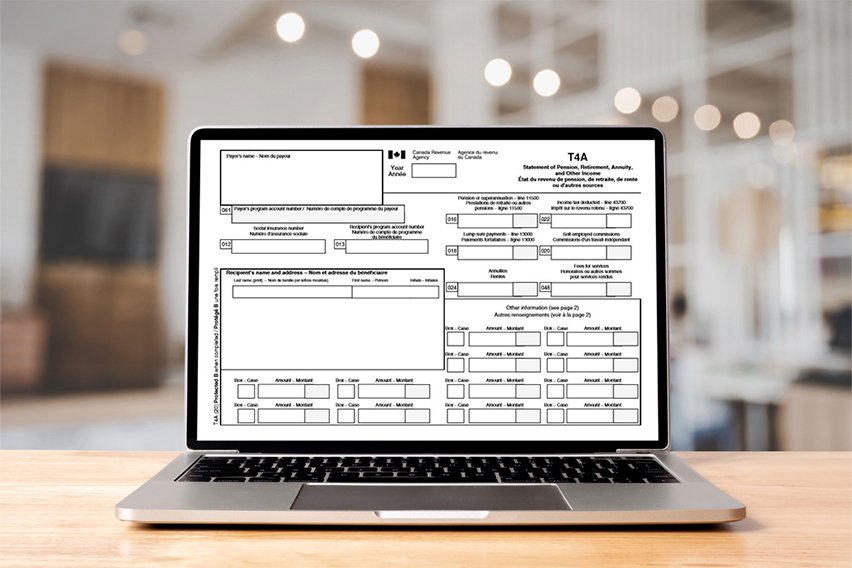Disability Tax Credit (DTC): A Detailed Guide for Canada

The Canadian disability tax credit (DTC) is available to anyone with marked restrictions in their daily functioning due to a prolonged physical or mental impairment. It’s also available to caregivers if the person with these restrictions is financially dependent on them. This tax credit, designed to alleviate the additional costs associated with managing disabilities, includes provisions for the home accessibility tax credit.
Applying for disability tax credits is a somewhat complex process, and not everyone with a disability qualifies for DTC. While there are no restrictions on which disabilities qualify, there are restrictions regarding how much the disability affects the person’s daily life.
As a result, 2 people with the same diagnosis may not both qualify depending on their circumstances. However, it’s important to note that a disabled person who does not qualify for DTC is likely eligible for other benefits.
Key Takeaways
- DTC is available to anyone with or anyone who cares for someone with any physical or mental disability.
- Any diagnosed disability may qualify, but it must significantly impair the person experiencing it.
- The DTC application process requires validation from a licensed medical practitioner.
- You may retroactively claim DTC for up to 10 years past.
- Disability tax credit application involves Form t2201, which must be filled by both the filer and a medical professional.
- The amount you will receive varies based on your income, your province, and your tax year.
- What Is The Disability Tax Credit?
- What Is the Disability Tax Credit Eligibility Criteria?
- How Does the Disability Tax Credit Work?
- How to Apply For Disability Tax Credit
- How Do You Fill Out a Disability Tax Credit Form?
- How is the Disability Tax Credit Calculated?
- Common Reasons For Disability Tax Credit Denial
- FreshBooks Makes Tax Preparation Simple
- Frequently Asked Questions
What Is The Disability Tax Credit?
The Canada disability tax credit is a non-refundable tax credit that may be claimed by a person with disabilities or their caregiver. This tax credit reduces the amount of income tax you, your caregiver, or your loved one pay. This reduction aims to help people with disabilities and/or their caregivers pay for the additional costs related to managing their or their loved one’s disability.

What Is the Disability Tax Credit Eligibility Criteria?
Anyone who has or cares for someone with a severe and prolonged impairment may apply for the CRA disability tax credit. There are two categories to this definition. The disabled person in question must either be unable to perform basic daily activities or perform them significantly slower than what’s typical for another person their age.
Here is a non-exhaustive example list of disabilities that qualify for disability tax credit.
- Mobility issues
- Brain injury
- Impaired mental functions
- Severe learning disability
- Hearing loss
- Vision loss
- Autoimmune diseases
- Chronic pain
Many disabled people overestimate the level of impairment they need to qualify, which leaves them missing out. The Canada Revenue Agency (CRA) states that any condition can qualify as long as it meets these criteria:
- It must be verified by a licensed medical practitioner
- It must affect the person at least 90% of the time
- The person must perform specific tasks at least 3 times slower than average for their age
- The condition must affect the person continuously for at least 12 months
- Medication does not improve symptoms
*Note: if you take medication to manage your disability and it successfully alleviates impairments, you will not be eligible for DTC. However, you may claim the cost of your prescription medications as a different tax credit.
How Does the Disability Tax Credit Work?
The DTC reduces the amount of taxes you owe on income tax. You may claim DTC for yourself, someone who relies on your income, or who needs you to help them perform daily activities. Your DTC application must be sent alongside approval from a licensed medical professional. You may also be eligible for back tax reimbursement of up to 10 years past.
You can’t get your disability tax credit if you don’t claim it. At FreshBooks, we know how challenging it can be to keep track of that alongside all your other tax claims. That’s why we’ve done what we can to take the pain out of tax preparation.
How to Apply For Disability Tax Credit
To apply for DTC, simply fill out and submit Form T2201, Disability Tax Credit Certificate. You or a family member would fill out Part A, and a medical practitioner would fill out Part B. The purpose of Part B is for the CRA to receive confirmed medical verification of severe impairment to physical or mental functions.
Once you submit the form, it will be reviewed by CRA agents. The CRA will decide whether or not to approve your DTC application based on their professional opinion. If your application is rejected, the CRA will send you a formal objection letter that explains why they rejected your application.
As of the 2024/2025 tax year, this Part A can be done online. Visit the Government of Canada website to submit your online application. Sign in to your account and fill in the necessary details with the necessary form. Part B will still need to be sent separately by your medical practitioner.
How Do You Fill Out a Disability Tax Credit Form?
Download Form T2201 from the CRA website and fill out all sections in parts A & B. If your disability makes it difficult for you to read the form, you may request it in an alternative format. Large print versions are also available online.
In Part A, you or a trusted person describes your disability and the nature of your impairment. In Part B, a healthcare practitioner describes the same. If you are filling out the form as a caregiver, there is a specific section just for you. If you are filling it out as a disabled person, you may ignore that section.
Part A also must include all your identifying basic information, such as your name, address, and SIN number. This will tell the CRA where to send your DTC if it’s approved.
How is the Disability Tax Credit Calculated?
No matter your or your loved one’s disability, the amount you will receive at DTC varies. It depends on the filer’s income, your province, and whether the disabled individual is an adult or a minor. To estimate the amount you will get, multiply the provincial and federal amounts by their respective lowest tax rates, then add the 2 results. It’s important to note that while the disability tax credit focuses on reducing income tax, there are other tax credits, such as the dividend tax credit, that may apply to individuals with investment income.
The federal amount in 2024 for an adult over 18 is $9,872. If you are claiming on behalf of a child under 18 years of age, you will receive an additional value of $5,758 for a total of $15,630. This will not replace the Canada Child Benefit. However, this supplement is reduced when your total child care and attendant care expenses claimed for a taxpayer under 18 exceed the threshold of $3,373 and are eliminated when those expenses exceed the threshold of $9,131.
Here is an example using an adult in the province of Ontario (Ontario’s provincial base amount in 2024 is $8,790 for an adult).
Federal Portion:
Federal Base Amount (Adult) x Federal Tax Rate
$9,872 x 15% = $1,480.80
Provincial Portion:
Provincial Base Amount (Ontario) x Provincial Tax Rate
$8,790 x 10% = $879.00
Total DTC Amount:
Federal Total + Provincial Total
$1,480.80 + $879.00 = $2,359.80
These amounts vary each tax year. Make sure you research the current amount for your province. If you plan to claim retroactive disability benefits, you will need to use the amounts that were current to each year you plan to claim.
Common Reasons For Disability Tax Credit Denial
As discussed, applying for DTC isn’t a guarantee that you’ll get it. The CRA will review your documents and determine eligibility before credit approval. Some common reasons why DTC applications are denied include:
- Incomplete Form T2201
- Your family doctor does not understand the CRA’s criteria and incorrectly documented information.
- The CRA did not receive secondary documentation from a medical practitioner in time.
- Your or your loved one’s condition was determined as not restrictive enough to require additional financial help.
If your application is denied, you may object to the CRA’s decision. You can do this by phoning the CRA or by submitting a letter of appeal.
FreshBooks Makes Tax Preparation Simple
Claiming DTC is an intensive process. There’s a lot to track and keep a record of. FreshBooks can make this process a bit easier thanks to its user-friendly interface and time-saving features. Our accounting software can help you track any disability costs so you can get a clear idea of how much you will save.
Try FreshBooks free to track your claimed disability amount and any other medical expenses tax deduction this tax season.
Are you a small business owner? If so, you might be interested in discovering more tax write-offs for small businesses in Canada.

FAQs About Disability Tax Credit
Still have more questions? While it won’t replace advice from a financial professional, one of our FAQs might be able to offer some insight.
Is the disability tax credit a monthly payment?
The disability tax credit is a reduction in the amount of income tax you have to pay. The child disability benefit (CDB) is a different credit that families receive as a tax-free monthly payment. Adults can expect returns on a yearly basis. If you’re tracking either DTC or CDB, you can use FreshBooks to keep accurate records of every amount and when it came in.
How much do you get back for disability tax credit?
Your disability amount will vary based on your income, your province, and the year you file for. Therefore, we can’t give you an exact figure to state how much you will get back for your DTC. You can estimate your possible amount using the formulas above and FreshBooks to calculate tax.
Who is eligible for the Canadian disability tax credit?
Anyone with or who has a financial dependence with a severe physical or mental disability that profoundly affects daily life in ways that medication cannot alleviate. There are no restrictions on which diagnoses qualify; it’s all a matter of how much it affects you or your loved one. Children are calculated in their own way, but you may also claim DTC if you have an adult dependent, such as a common-law partner.
How long does it take CRA to process disability tax credit?
The CRA may take up to 8 weeks to process a DTC application. How long it takes to receive your benefit may depend on if you need to appeal. For this reason, it’s important to begin your application process well before your tax return deadline.
More Useful Resources
About the author
Kristen Slavin is a CPA with 16 years of experience, specializing in accounting, bookkeeping, and tax services for small businesses. A member of the CPA Association of BC, she also holds a Master’s Degree in Business Administration from Simon Fraser University. In her spare time, Kristen enjoys camping, hiking, and road tripping with her husband and two children. In 2022 Kristen founded K10 Accounting. The firm offers bookkeeping and accounting services for business and personal needs, as well as ERP consulting and audit assistance.
RELATED ARTICLES


 Dividend Tax Credit: A Detailed Guide for Canada
Dividend Tax Credit: A Detailed Guide for Canada How To Pay Taxes in Canada (2025–25)
How To Pay Taxes in Canada (2025–25) What Is Line 10100 Tax Return (Formerly 101) in Canada
What Is Line 10100 Tax Return (Formerly 101) in Canada 17 Medical Expenses Tax Deductions in Canada
17 Medical Expenses Tax Deductions in Canada Tax Credit Vs Tax Deduction: What’s the Difference?
Tax Credit Vs Tax Deduction: What’s the Difference? T4 vs T4A Tax Form: What’s the Difference?
T4 vs T4A Tax Form: What’s the Difference?